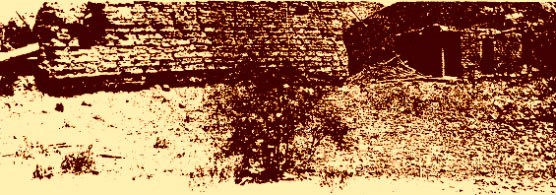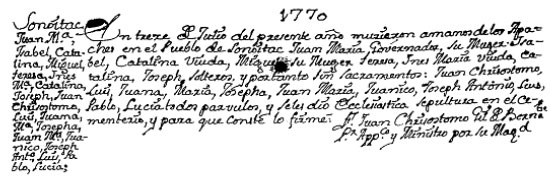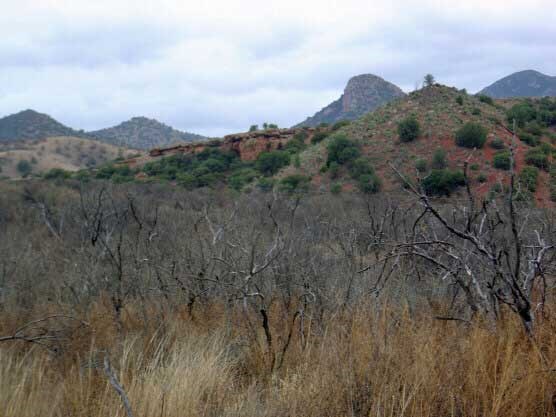
Arizona Historical Society Photo Spelling rules were non-existent in the late seventeenth and early eighteenth centuries, especially when the Padre was trying to spell an O'odham word like Sonoitac. Some of the many ways it was written include, "Sonoydag, Xona, Xonoitac, and Sonoita. "The most common spelling of the middle eighteenth century seems to have been "Sonoitac," however. Padre Kino called it "Los Reyes de Sonoydag," and on October 27, 1699, claimed that there were "many more" people living at that ranchería than the "ninety souls" who were living at Guevavi. On April 24, 1700, he wrote that Coro, the Chief of the Sobaípuri, "had gathered [there] with all his people, who numbered more than five hundred souls." Well up into the 1760's, Sonoitac continued to be more populous than its three sister missions, Guevavi, Tumacácori, and Calabazas, all of which were administered by the same priest. Both before and after Kino=s death, Father Agustín de Campos administered the entire northern frontier from his headquarters at San Ignacio. In the early years he referred to the ranchería as Xona, often in context with the nearby native settlement of Toaqui. As time passed, he began to refer to Xona as Xonoitac, and Toaqui as Toacuquita. Some time after Father Campos= era, Xonoitac became a visita of Guevavi, a church was built, and a patron=s name was added, making it San Ignacio de Sonoitac. After the Pima rebellion of 1751, new churches were built at Sonoitac, Tumacácori, and Toacuquita, which became San Cayetano de Calabazas. Sonoitac continued to operate as a mission until sometime in the 1780's, when it was abandoned.
The following entry was recorded in the Sonoitac burial registry on July13, 1770: 
1770 Writing about this incident nearly three years later, in his bid to have Sonoitac moved closer to Tumacácori, Father Bartolomé Ximeno had the following to say:

Sonoitac, eleven leagues distant from the headquarters at Tumacacori, has twenty- six families. However, there are only eleven women to be found among them because of an attack made by the Apaches about two years ago in which most of the women were killed where they had taken refuge in the house that was built for the Padre. These people of Sonoitac have all their fields more than a league from their settlement. 
Photo by Jeff Axel |
Last updated: February 24, 2015
